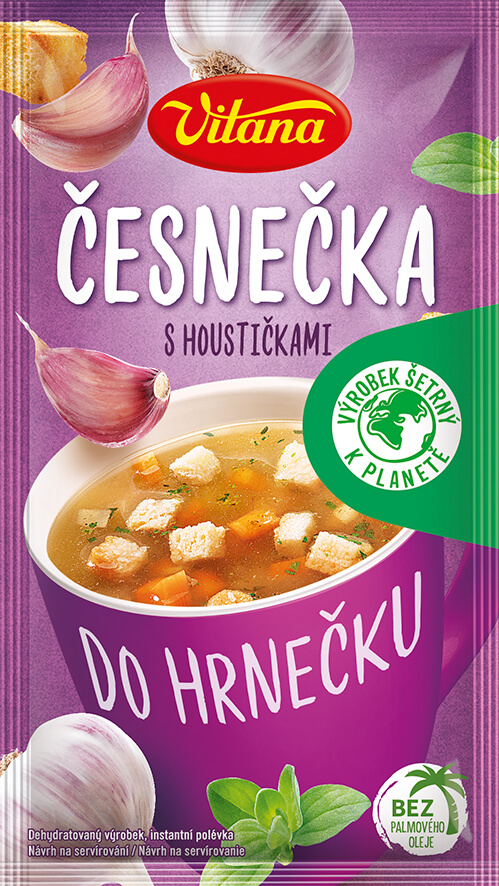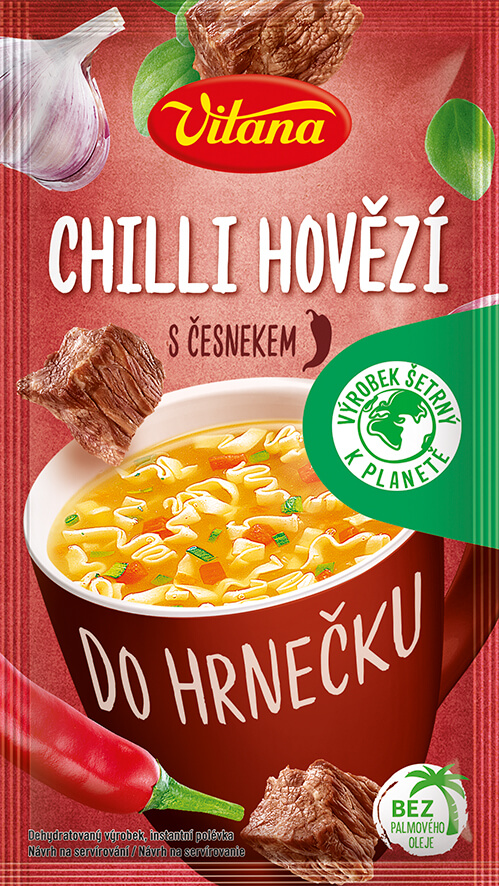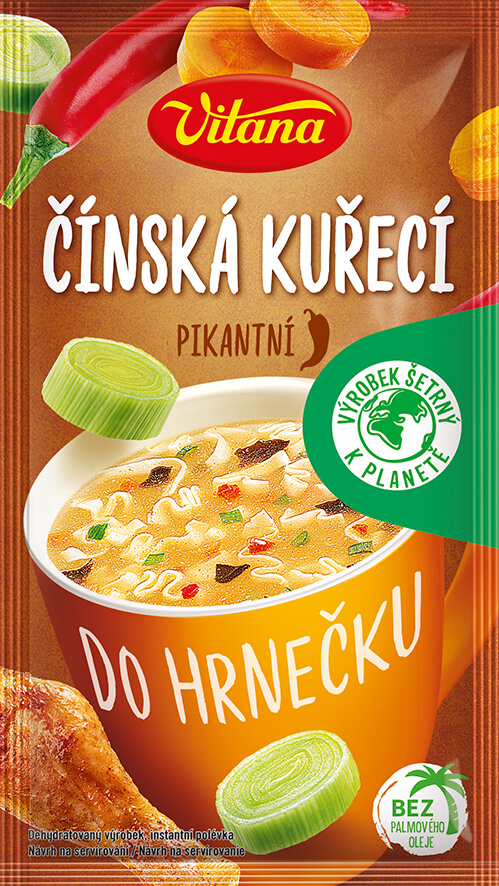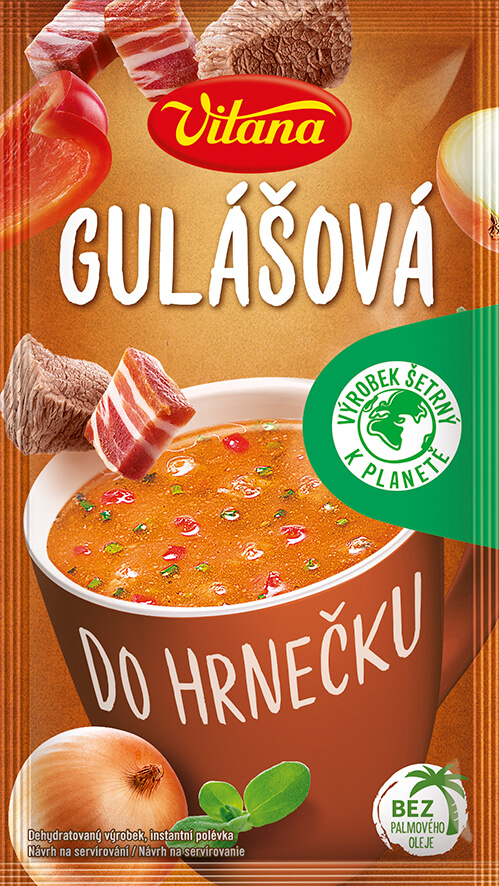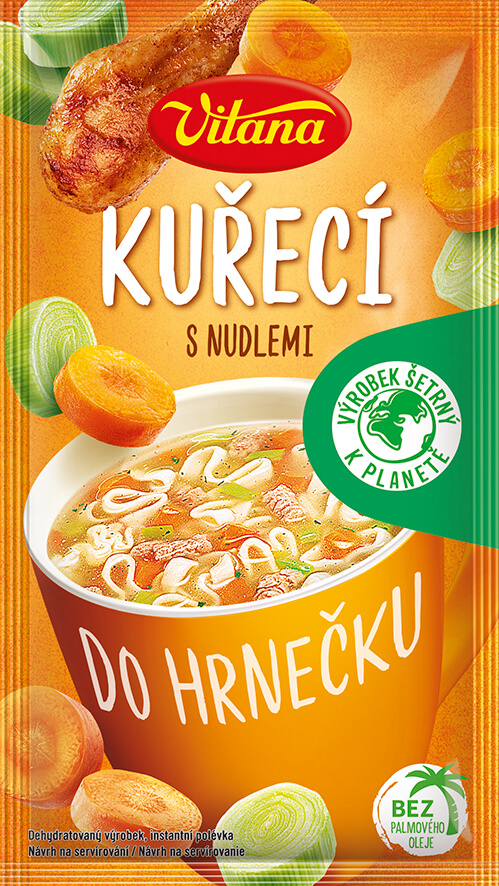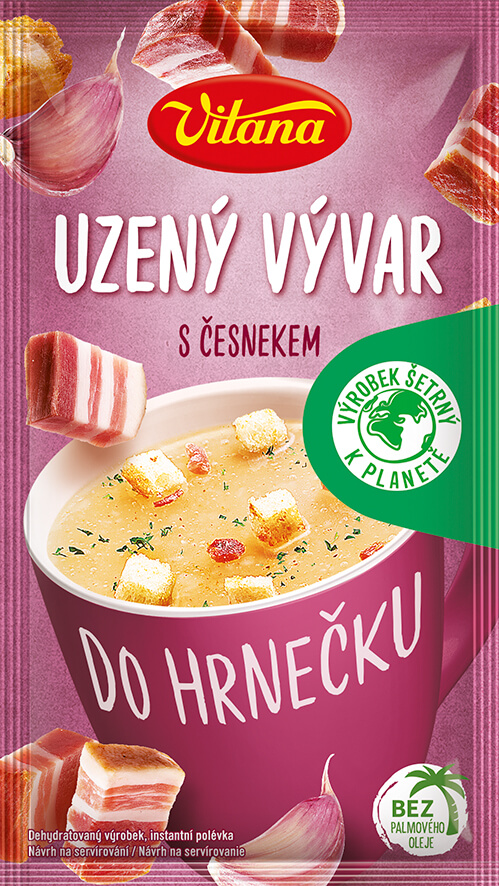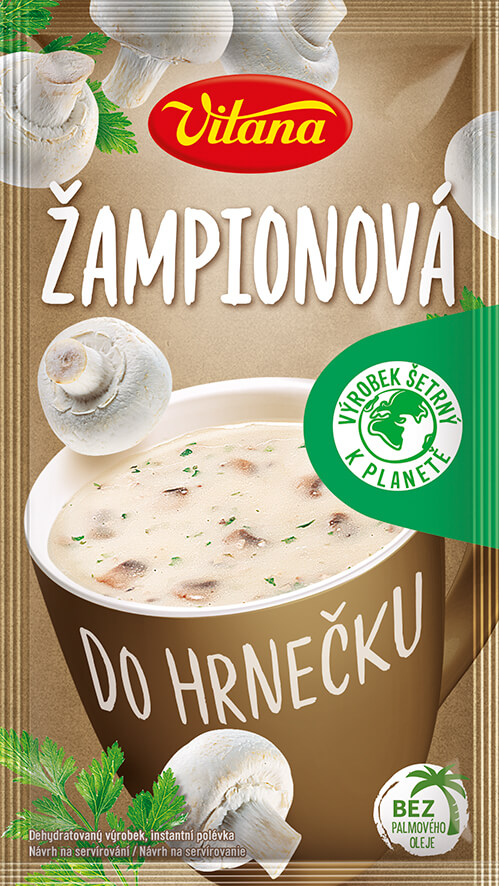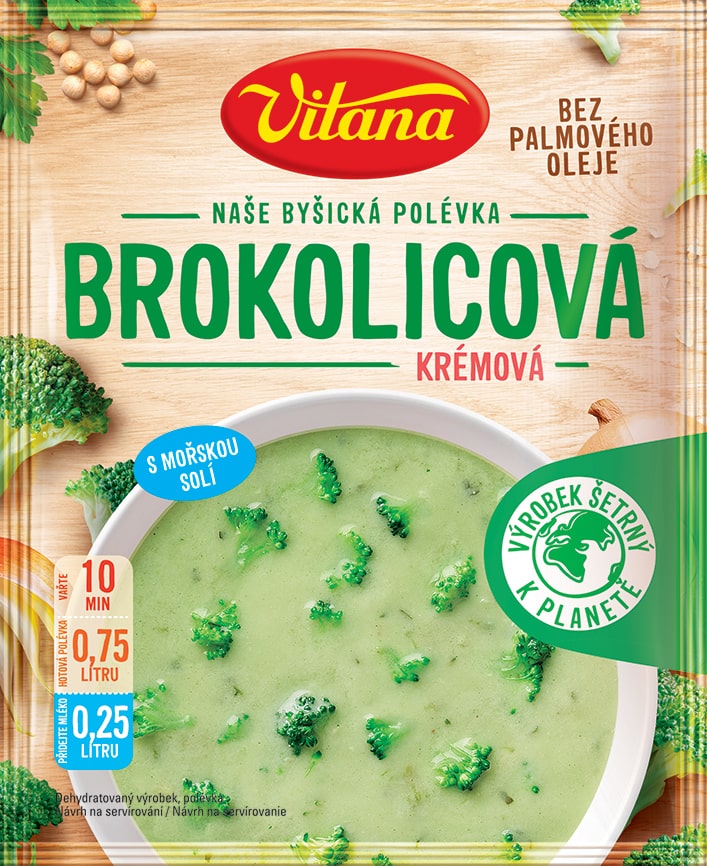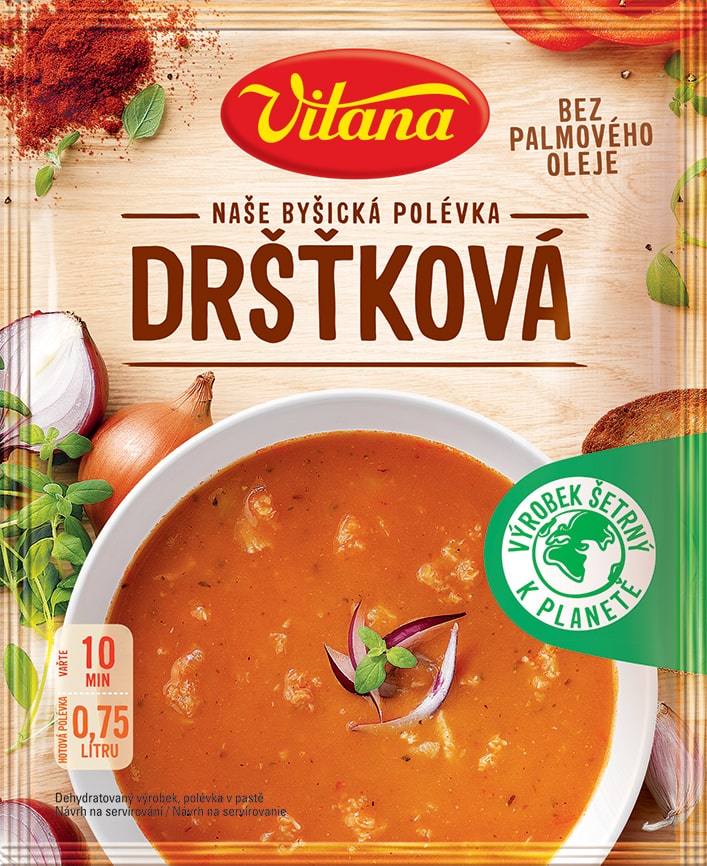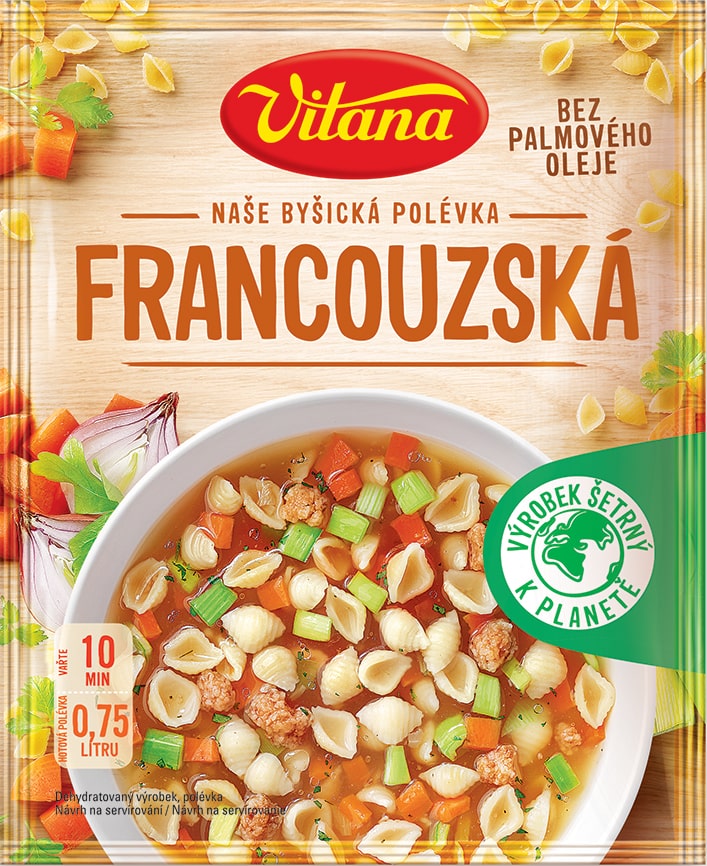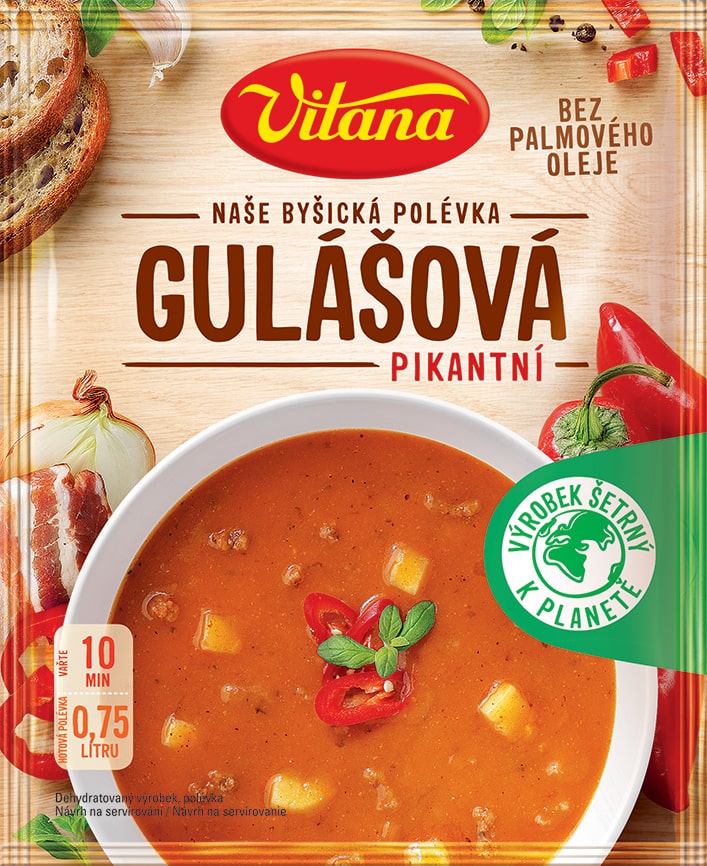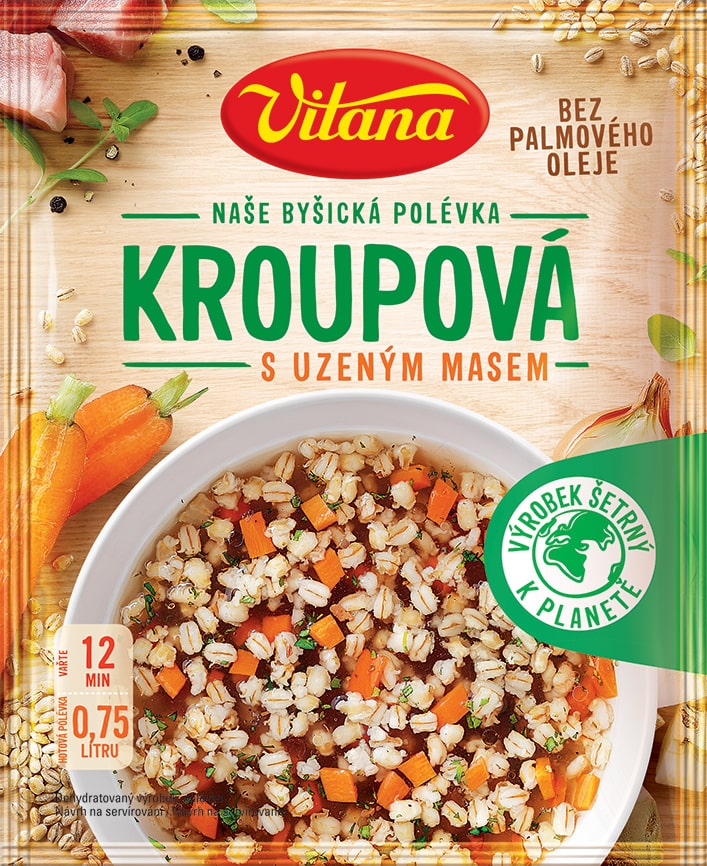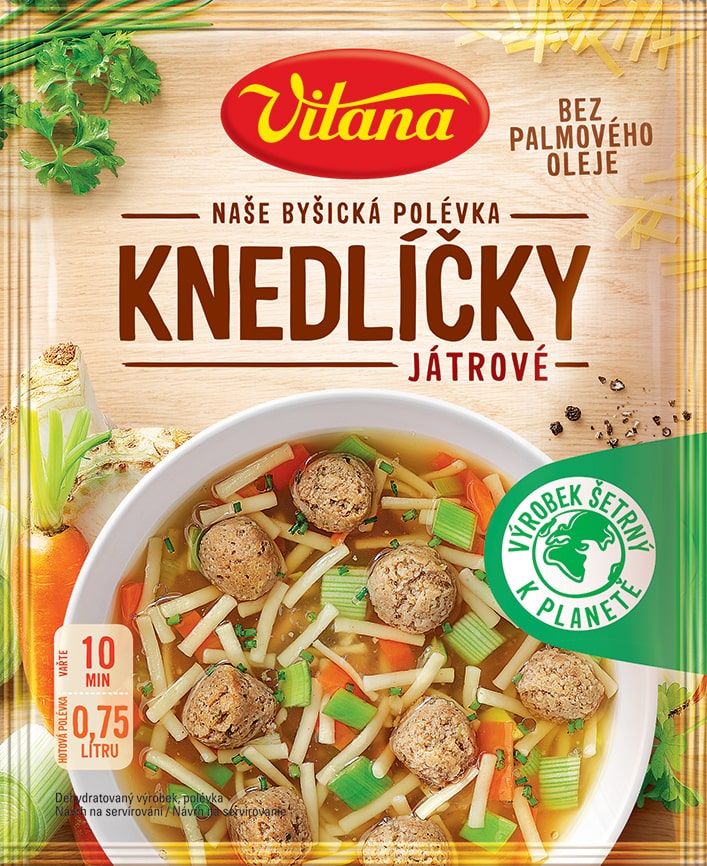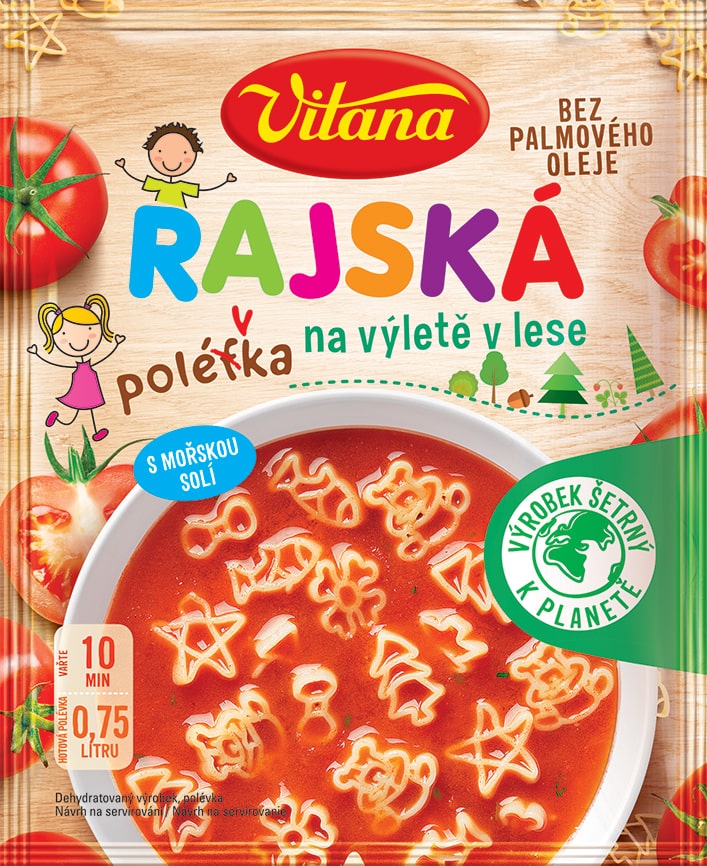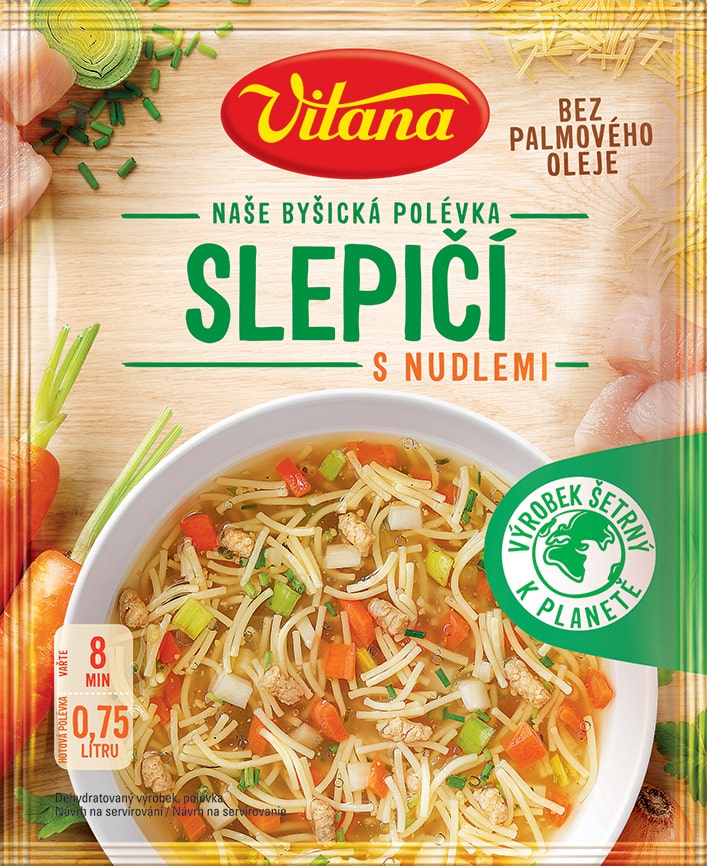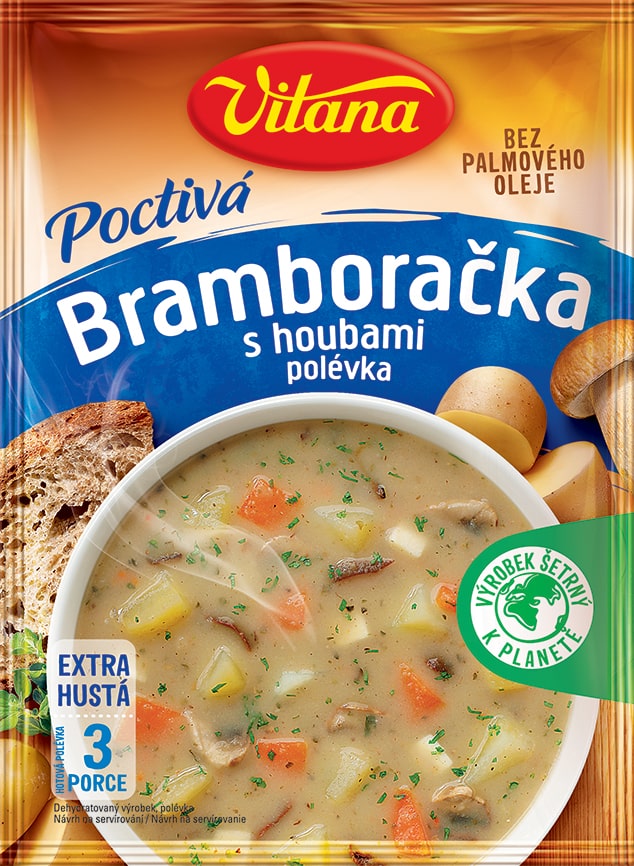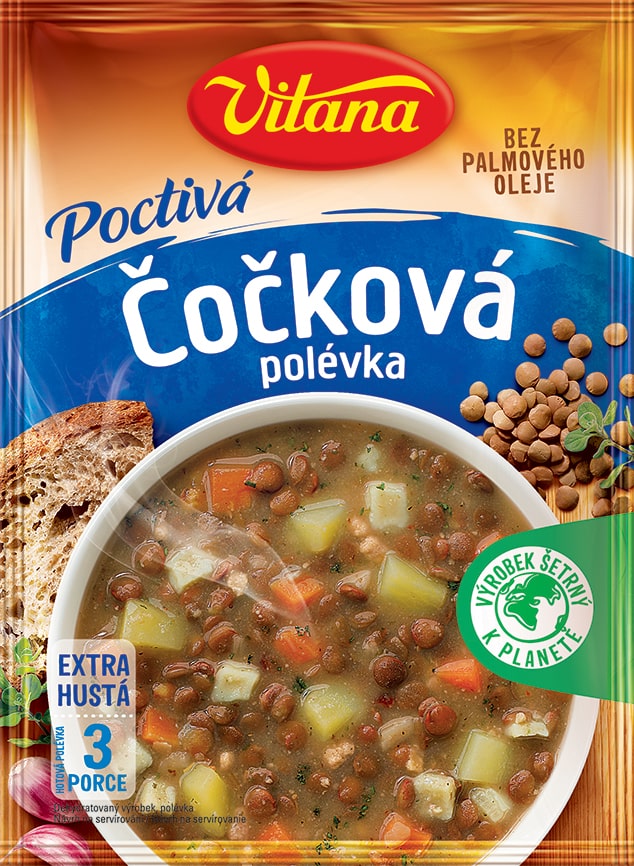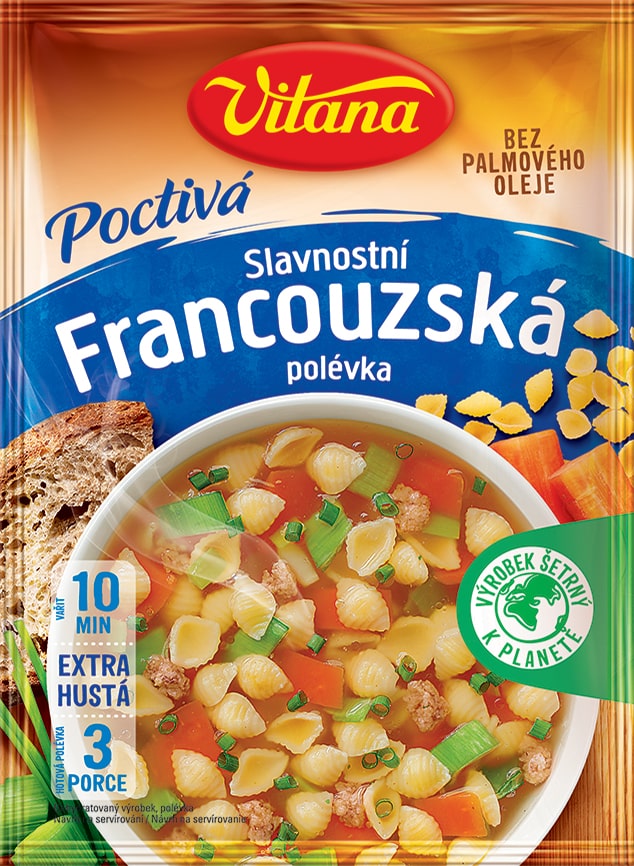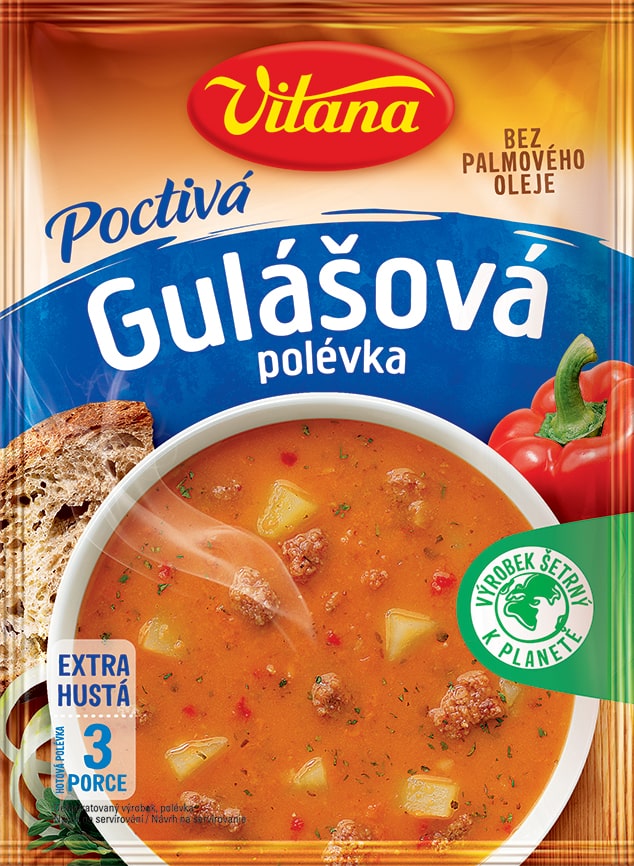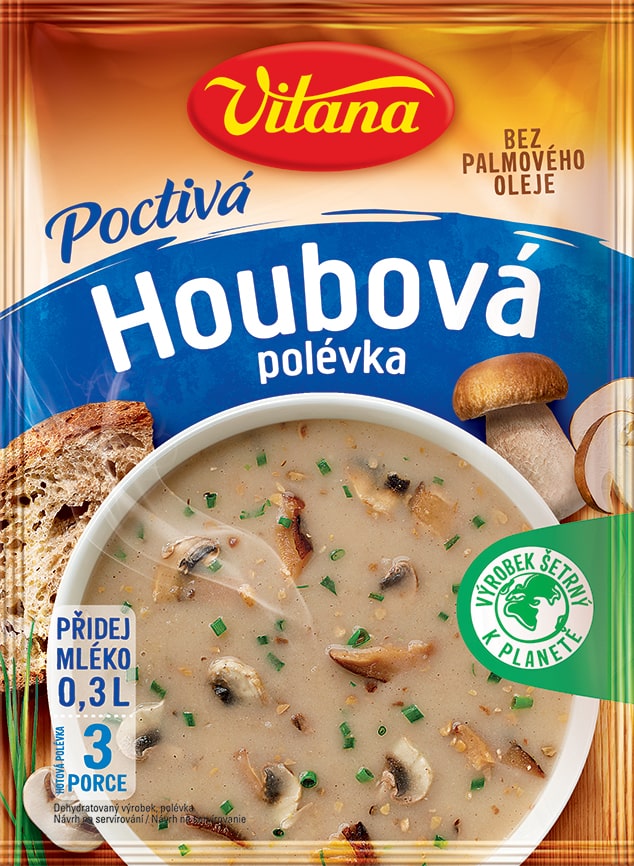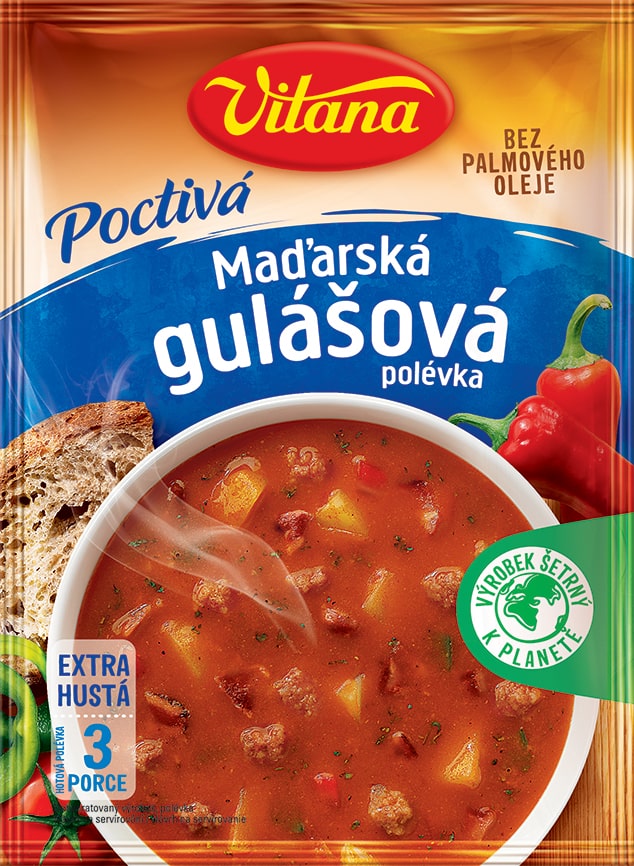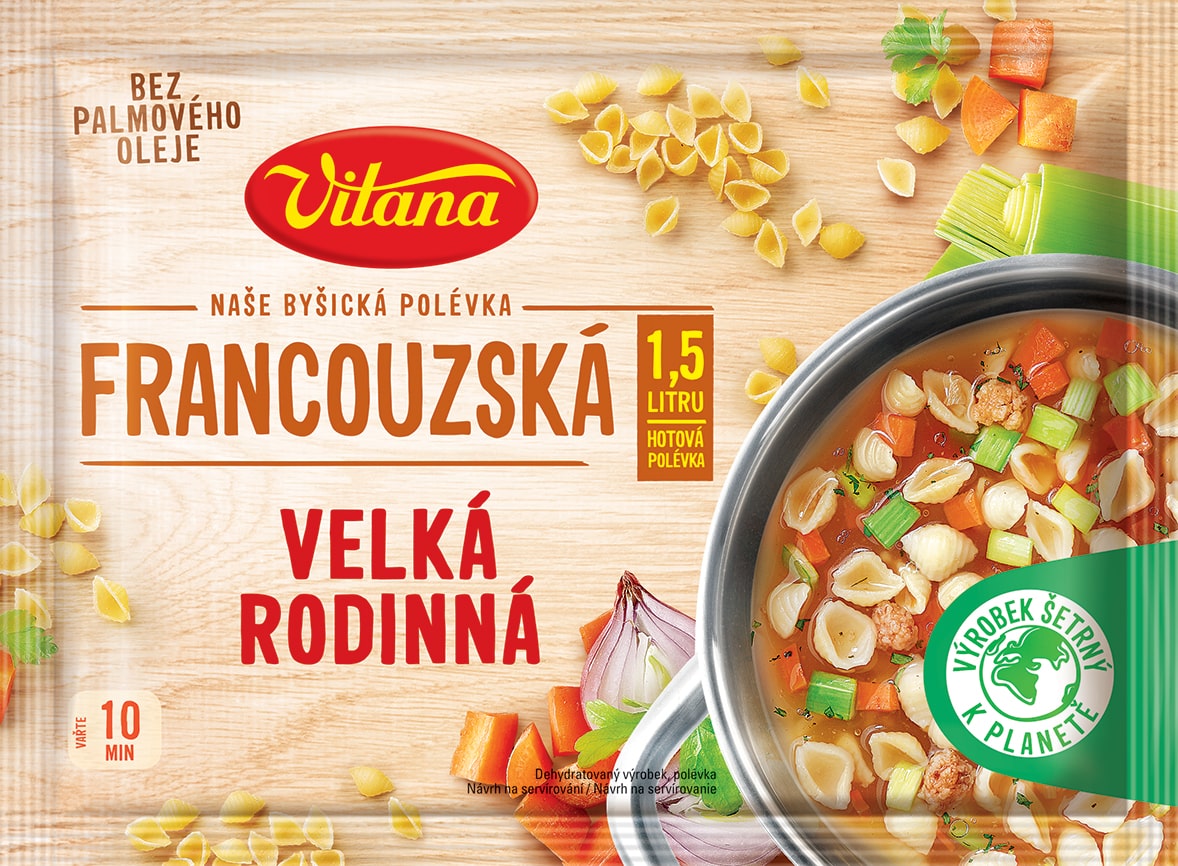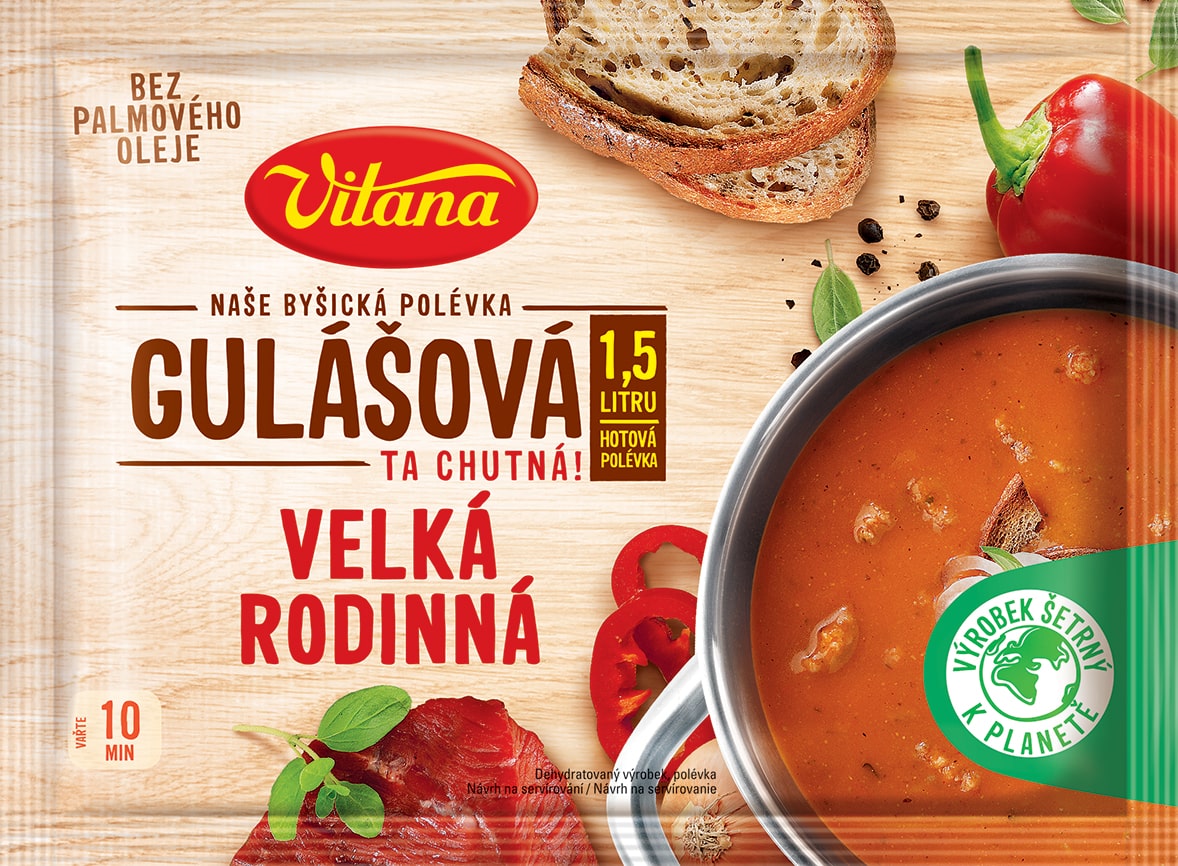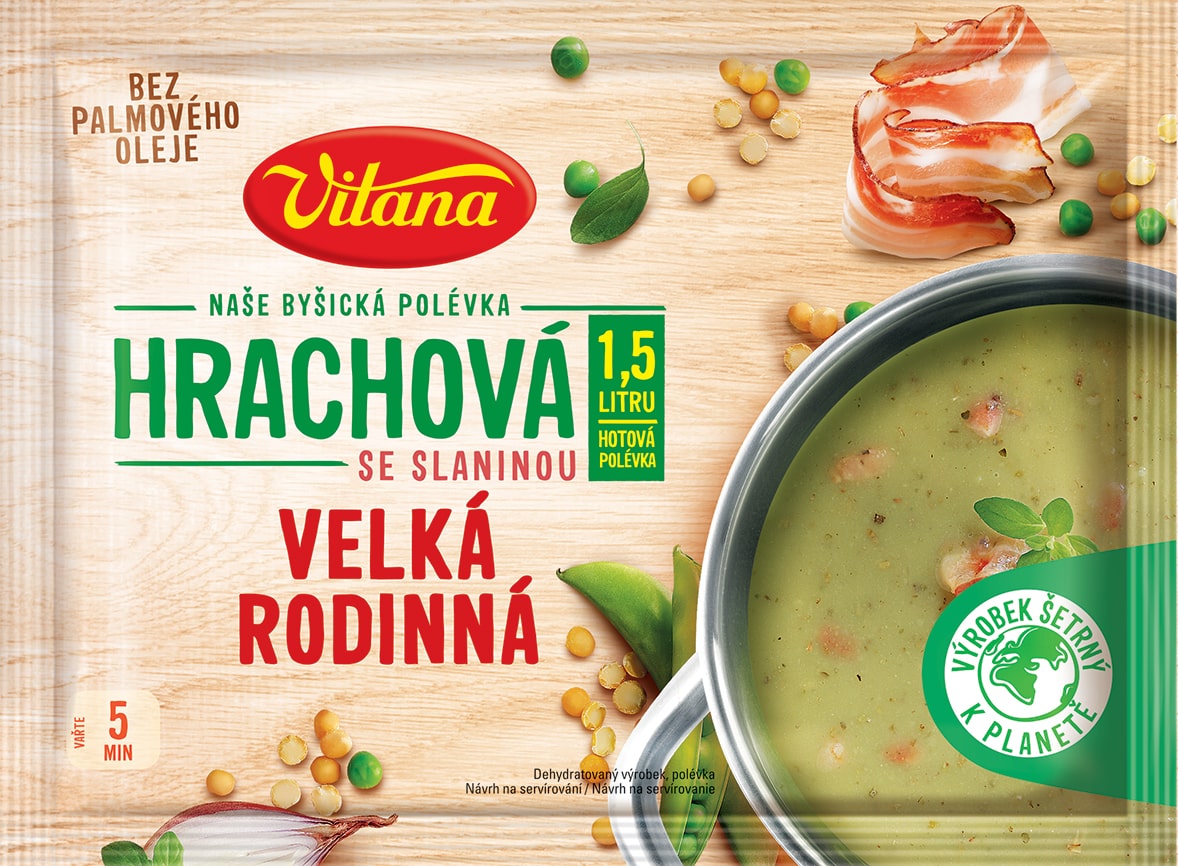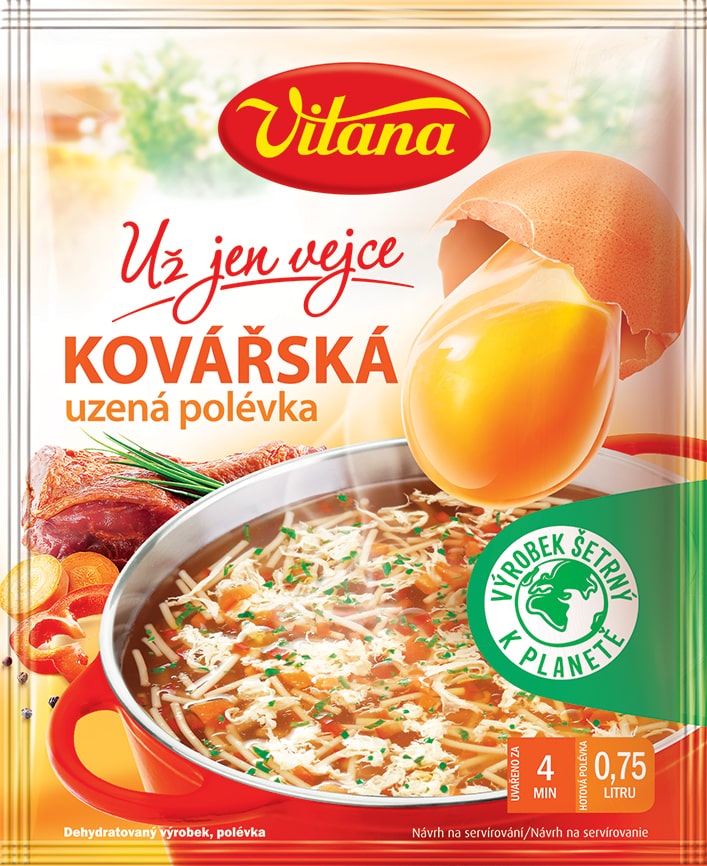Environmental friendly
product
Why is the soup  friendly to the planet?
friendly to the planet?
We make sure that the soups are friendly to the planet.

-
We generate minimum waste
during vegetable processing -
We use efficient
transport and storage. -
Our soups are
palm-oil free -
And we use electricity
from renewable sources
Ecological certification
Determination of the product carbon rating scale
The modified Product Carbon Footprint (PCF) method is used in the analysis. It is a measure of the total quantity of greenhouse gases released during the life cycle of a given product or service.
What is the carbon footprint?
The carbon footprint is a measure of the impact of human activity on the environment, particularly on the climate change on our planet. It is an indirect indicator of the consumption of energy, a product and services. The carbon footprint is not associated only with travel and logistics, but also gastronomy and the food industry or the fashion industry.
The study was prepared by the CI2 organisation
CI2, o. p. s. is a public benefit not-for-profit organization, which is focused on sustainability, the carbon and ecological footprint, environment or adaptation to climate change. It helps and educates the public administration, enterprises, educational institutions and the general public.

The Czechs and climate change
We asked about how important environmental protection is to you:
-
 66 %
66 %
...think that food production and animal farming have an impact on the environment or climate change.
-
 75 %
75 %
...would welcome a label on the packaging that the products are more environmental friendly.
-
 3 / 4
3 / 4
The Czech population state their efforts at reducing the impact on the climate – their carbon footprint.
The research was done by Kantar
Kantar is an international agency, which is engaged in both qualitative and quantitative research. It has expert knowledge in the areas of innovation, brands, communication and the customers themselves.
Frequently Asked Questions
-
How can I influence the carbon footprint?
Each of us can influence the size of the carbon footprint, which he/she leaves behind. The size of the carbon footprint is influenced by all human activity – for instance, how and what we use in cooking, if we drive or walk to the shop, or the mode of transport we opt for during holiday travel. One of the methods of carbon footprint reduction is change of eating habits.
-
How is Vitana trying to reduce the carbon footprint?
The Vitana brand is making a long-term effort to reduce the size of the carbon footprint of its products. The production plant in Byšice, where the cup soups are made, monitors the size of the carbon footprint during production of products since 2014. In the period from 2014 to 2018, the total CO2 emissions were reduced by 55 %. The calculation of the CO2 volume for 2019 shall be announced by autumn of 2020.
-
Are the other Vitana products also environmental friendly?
Gradually we are also calculating the carbon footprint of other Vitana brand products. Presently, we have calculated it only for the cup soups. Next in line are the cooking soups, and other products shall follow. We shall place the “Environmental friendly product” logo only on the products with a low carbon footprint.
-
What is the carbon footprint in a case where I cook the soup at home using fresh ingredients?
The carbon footprint of soup cooked at home is higher than Vitana instant soup, which is made in a large quantity and has minimum storage requirements thanks to its dehydrated form. The value of home-made soup is influenced mainly by the quantity of ingredients used and the cooking time.
-
What are the components of the carbon footprint of cup soups?
It consists of the ingredients and packaging material used, their production, transportation and preparation costs. All these components share in the carbon footprint.
-
How can I calculate the carbon footprint?
You can calculate the carbon footprint using the calculator at www.uhlikovastopa.cz/kalkulacka
-
Do fresh foods (for instance, fruit and vegetables) have a lower carbon footprint than other foods?
Not always. The size of the carbon footprint is different for each product. However, this does not mean that fruits and vegetables automatically have a low carbon footprint. For instance, a banana, which is transported across the entire globe, has a higher carbon footprint than a locally made cup soup. All the Vitana brand products are made in the Czech Republic and distributed over a relatively short distance, which significantly reduces their carbon footprint.
-
Is the carbon footprint a global issue?
Yes. The Paris Agreement was adopted in 2016 and the Czech Republic ratified it as a member of the EU. It is an integral part and is also the undertaking of the member states to lower the emissions of greenhouse gases at least by 40 % by the year 2030.
-
What is the meaning of energy from renewable sources?
It is energy produced from sources, which are naturally renewed in the human time frame (water, sunlight, wind, etc). In its production, Vitana uses energy with the, so- called, Certificates of Origin, thanks to which the generation of electricity in hydro- power plants is being financially supported.







